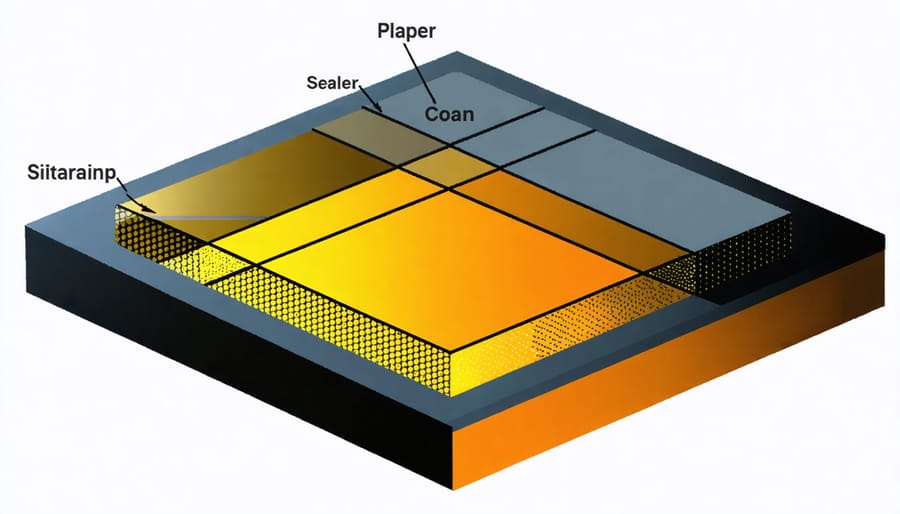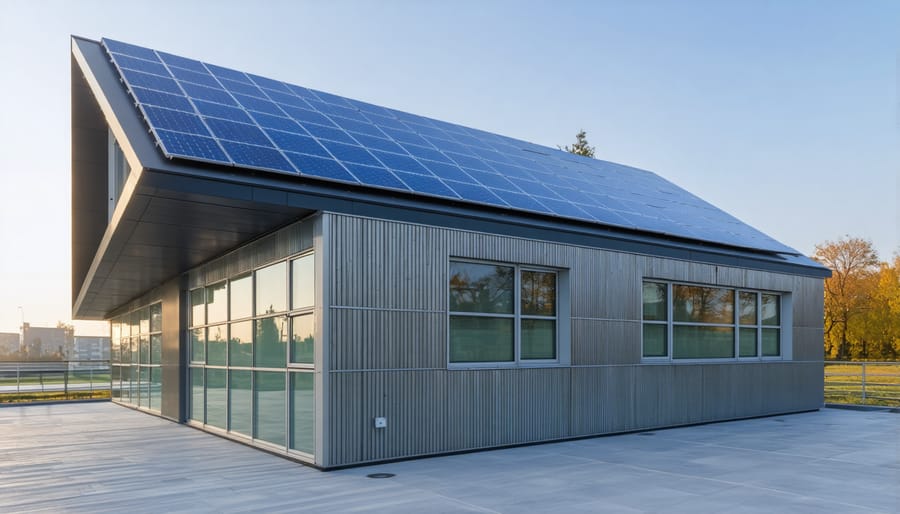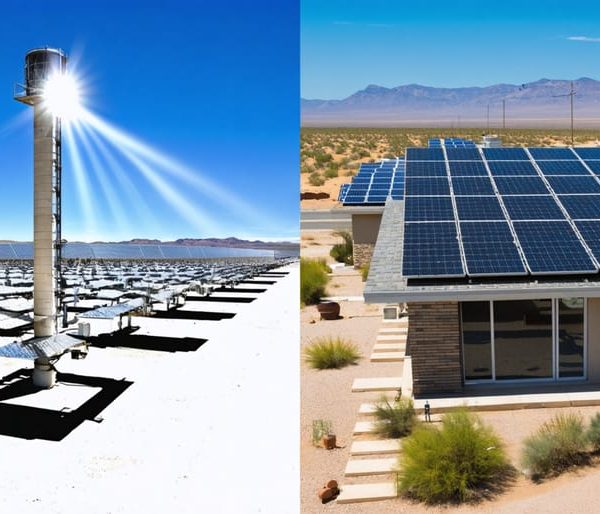Graphene Solar Cells: The Game-Changing Technology Making Perovskite More Efficient
Graphene solar cells represent a groundbreaking leap in renewable energy technology, combining atomic-thin carbon layers with halide perovskite technology to achieve unprecedented power conversion efficiencies. These ultra-thin, flexible solar cells capture and convert sunlight into electricity with remarkable effectiveness, potentially transforming how we harness solar energy.
Unlike traditional silicon-based panels, graphene solar cells offer exceptional conductivity and transparency while requiring just a fraction of the material thickness. This innovation translates to lighter, more adaptable solar solutions that can be integrated into various surfaces – from building windows to vehicle exteriors – without compromising structural integrity or aesthetic appeal.
Recent breakthroughs have pushed conversion efficiencies above 20%, marking a significant milestone in solar technology development. When combined with their reduced production costs and environmental footprint, these advances position graphene-based solar cells as a promising solution for both residential and commercial energy needs.
As we stand at the threshold of a renewable energy revolution, graphene solar cells exemplify how cutting-edge materials science can address our growing energy demands while supporting sustainability goals. Their potential to deliver more affordable, efficient, and versatile solar power solutions makes them a compelling choice for forward-thinking energy consumers.
The Power of Graphene in Solar Technology

What Makes Graphene Special
Imagine a material thinner than a human hair, stronger than steel, and clearer than glass – that’s graphene for you! This remarkable material is essentially a single layer of carbon atoms arranged in a honeycomb pattern, and it’s revolutionizing solar cell technology in amazing ways.
What makes graphene truly special is its exceptional electrical conductivity. Electrons can zip through graphene at lightning-fast speeds, making it an ideal material for collecting and transporting electrical charges in solar cells. Plus, it’s nearly transparent, allowing about 97% of light to pass through while still conducting electricity – a perfect combination for solar applications.
But there’s more! Graphene is incredibly strong despite being ultra-thin. A single sheet of graphene could theoretically support the weight of an elephant balanced on a pencil point without breaking. This durability means solar cells using graphene can potentially last longer and withstand harsh weather conditions better than traditional materials.
These unique properties – conductivity, transparency, and strength – make graphene a game-changer in solar technology, promising more efficient and durable solar panels for our homes and businesses.
Graphene vs Traditional Materials
When compared to traditional silicon-based solar cells, graphene offers several game-changing advantages. Its incredible thinness – just one atom thick – allows for lighter and more flexible solar panels that can be installed on various surfaces, including curved roofs and walls. This flexibility opens up new possibilities for solar integration in building design.
Graphene’s exceptional electrical conductivity outperforms conventional materials by a significant margin. While silicon solar cells typically achieve 15-20% efficiency, graphene-enhanced cells have shown potential to reach higher efficiency levels while using less material. This means more power generation in a smaller footprint.
Another striking difference is durability. Traditional solar materials can degrade over time, especially when exposed to harsh weather conditions. Graphene’s robust molecular structure makes it more resistant to environmental factors, potentially extending the lifespan of solar panels.
Cost is currently the main challenge, as graphene production is more expensive than silicon. However, as manufacturing techniques improve and production scales up, prices are expected to decrease, making graphene solar cells increasingly competitive with conventional options.
Graphene-Enhanced Perovskite Solar Cells

Enhanced Efficiency
Graphene’s remarkable properties make it a game-changer for solar cell efficiency. When integrated into traditional solar panels, this one-atom-thick layer of carbon acts like a superhighway for electrons, dramatically improving how well the cells convert sunlight into electricity.
The magic happens at the molecular level, where graphene’s unique structure allows electrons to move with almost no resistance. This means more of the sun’s energy gets captured and converted into usable electricity, rather than being lost as heat. In practical terms, graphene-enhanced solar cells have shown efficiency improvements of up to 15-20% compared to conventional panels.
What makes graphene particularly exciting is its transparency and conductivity. The material allows more sunlight to reach the active layers of the solar cell while simultaneously providing better electrical connections throughout the panel. Think of it as adding both a crystal-clear window and an express lane for electricity all in one.
Recent tests have demonstrated that graphene-enhanced solar cells maintain their improved performance even in less-than-ideal conditions, such as cloudy days or indirect sunlight. This means more consistent energy production throughout the day and across different seasons, making solar power a more reliable energy source for homes and businesses.
These efficiency gains translate directly into practical benefits: fewer panels needed for the same power output, reduced installation costs, and more energy generated from limited roof space.
Improved Durability
Graphene’s remarkable strength and flexibility have revolutionized the durability of solar cells, making them significantly more resilient to environmental challenges. Unlike traditional solar panels, graphene-enhanced cells can withstand harsh weather conditions without compromising their performance or structural integrity.
The integration of graphene creates a protective barrier that shields the sensitive components from moisture, dust, and UV radiation. This enhanced protection extends the lifespan of solar cells by up to 50% compared to conventional models, reducing replacement costs and maintenance requirements for property owners.
What’s particularly impressive is graphene’s ability to maintain cell efficiency even after exposure to extreme temperatures. Tests have shown that graphene solar cells continue to perform optimally in temperatures ranging from -40°F to 185°F, making them suitable for installation in diverse climates.
The material’s flexibility also means these cells are less likely to crack or break during installation or severe weather events. Many homeowners report that their graphene-enhanced panels have survived hailstorms that damaged traditional panels in their neighborhood.
This improved durability translates into better long-term value for investors. While the initial cost might be slightly higher, the extended lifespan and reduced maintenance needs make graphene solar cells an economically sound choice for both residential and commercial applications. Property managers particularly appreciate the reduced frequency of panel replacements and repairs, leading to lower operational costs over time.
Cost Benefits
Graphene solar cells offer compelling financial advantages that make them an attractive investment for both homeowners and businesses. The primary cost benefit comes from graphene’s exceptional electrical conductivity, which significantly improves energy conversion efficiency compared to traditional solar panels. This enhanced efficiency means you’ll need fewer panels to generate the same amount of power, reducing initial installation costs.
When integrated into hybrid solar systems, graphene-based panels can deliver up to 30% more energy output per square foot. This increased efficiency translates to faster return on investment, typically cutting payback periods by several years compared to conventional solar installations.
Manufacturing costs for graphene solar cells are also decreasing as production techniques improve. While the initial cost might be slightly higher than traditional panels, the extended lifespan of graphene-based systems – often exceeding 25 years – ensures greater long-term savings. Additionally, these panels maintain their efficiency better over time, experiencing less performance degradation than conventional alternatives.
Maintenance costs are another area where graphene solar cells shine. Their durability and resistance to environmental factors mean fewer repairs and replacements are needed throughout their lifetime. For commercial properties, this translates to reduced operational expenses and more predictable energy budgets.
Real-World Applications
Residential Applications
Homeowners can significantly benefit from graphene solar cells, which offer a revolutionary approach to residential solar power generation. These next-generation panels are incredibly lightweight, making them perfect for installation on various roof types without requiring extensive structural reinforcement. The ultra-thin design also means they’re less visually intrusive than traditional solar panels, helping maintain your home’s aesthetic appeal.
One of the most exciting advantages for homeowners is the improved efficiency in low-light conditions. Graphene solar cells can generate electricity even on cloudy days or during early morning and late evening hours, extending their productive time significantly. When combined with integrated solar storage solutions, these systems can provide reliable power throughout the day and night.
The durability of graphene solar cells is another key benefit for residential applications. Their resistance to environmental factors like rain, snow, and UV radiation means less maintenance and longer system life. Additionally, their flexibility allows for installation on curved surfaces and non-traditional roof designs, opening up new possibilities for home solar integration.
Installation costs are becoming increasingly competitive, and many homeowners find that the superior performance and longevity of graphene solar cells make them a smart long-term investment. With various financing options and government incentives available, making the switch to this innovative technology is more accessible than ever.
Commercial Possibilities
The commercial potential of graphene solar cells is generating significant excitement across the renewable energy sector. Major manufacturers are already investing in research and development, with pilot programs showing promising results for large-scale implementation. These innovative cells are particularly attractive for commercial buildings and industrial facilities, where their lightweight nature and flexibility allow for installation on various surface types.
Several companies are developing manufacturing processes that could bring graphene solar cells to market within the next few years. The estimated cost of production, while currently higher than traditional silicon panels, is expected to decrease significantly as manufacturing scales up. Industry analysts predict that by 2025, graphene solar cells could achieve price parity with conventional solar technology while offering superior performance.
The technology is especially promising for integrating solar power into urban environments. Building-integrated photovoltaics (BIPV) using graphene cells could transform windows, facades, and rooftops into power-generating surfaces without compromising architectural aesthetics. This versatility opens up new markets in smart cities and sustainable architecture.
Early adopters in the commercial sector include data centers and manufacturing facilities, where the high energy efficiency of graphene cells provides substantial cost savings. Additionally, the technology’s potential for transparent solar panels has caught the attention of the automotive industry, with several manufacturers exploring integration into electric vehicle designs.

Future Outlook and Installation Considerations
The future of graphene solar cells looks incredibly promising, with researchers making significant breakthroughs in efficiency and durability. As we evaluate various solar technology options, graphene-based solutions are emerging as a game-changer for both residential and commercial applications.
Industry experts predict that within the next five years, we’ll see graphene solar cells achieving efficiency rates above 25%, making them increasingly competitive with traditional silicon panels. The technology’s flexibility and lightweight nature will open up new installation possibilities, including curved surfaces and architectural integration that wasn’t previously possible.
When considering installation, there are several key factors to keep in mind. First, ensure your roof or installation surface can support the panels’ weight, even though graphene panels are significantly lighter than conventional options. South-facing surfaces still provide optimal exposure, but the increased efficiency of graphene cells means they perform better in less-than-ideal conditions.
Weather resistance is another crucial consideration. While graphene is naturally durable, protective coating systems are still recommended for areas with extreme weather conditions. Professional installation is currently essential, as the technology requires specific handling and connection techniques to maximize performance.
For those planning to upgrade existing solar installations, it’s worth noting that many graphene solar systems are being designed with compatibility in mind. This means you can potentially integrate new graphene panels with your current setup as the technology becomes more widely available.
Cost considerations are expected to improve significantly. Manufacturing processes are becoming more streamlined, and as production scales up, prices are projected to decrease by 30-40% over the next three to five years. This makes waiting for the right moment to invest a valid strategy for budget-conscious consumers.
Looking ahead, we can expect to see more innovative applications, including building-integrated photovoltaics and mobile charging solutions. The technology’s potential for urban environments is particularly exciting, as its efficiency and flexibility make it ideal for smart city initiatives and sustainable building designs.
Graphene’s integration into perovskite solar cells marks a significant breakthrough in renewable energy technology. By enhancing stability, efficiency, and durability, graphene is helping transform solar power into a more practical and accessible energy solution for homes and businesses alike. The remarkable improvements in power conversion efficiency, coupled with reduced production costs, make these next-generation solar cells increasingly attractive for widespread adoption.
As research continues and manufacturing processes become more refined, we can expect to see graphene-enhanced solar cells becoming a common sight on rooftops and solar farms across the globe. The technology’s potential to extend cell lifespan while maintaining high performance levels addresses many of the traditional concerns about solar energy investment.
For environmentally conscious property owners and businesses looking to reduce their carbon footprint, graphene-based perovskite solar cells represent a promising path forward. While the technology is still evolving, the foundations have been laid for a more sustainable and efficient solar energy future. As we continue to face global energy challenges, these innovative cells stand ready to play a crucial role in our transition to clean, renewable energy sources.






